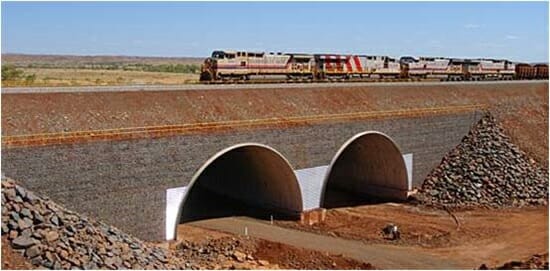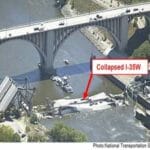- Course No E – 1529
- PDH Units 3.00
No data found for Custom Course Number
No data found for Custom Course Units
- Course No E – 1529
- PDH Units 3.00
Intended Audience: civil engineers and other design and maintenance professionals
PDH UNITS: 3
The inspection of bridge substructure and superstructure components are discussed in this course. The course presents a detailed, systematic guide to the inspection of each bridge component. The guidelines provided can be used to help recognize, describe, and assess problems with the various components, particularly fracture critical members (FCM). Course Outline Substructures 1. INTRODUCTION 2. ABUTMENTS 3. RETAINING WALLS 4. PIERS AND BENTS 5. PILE BENTS 6. DOLPHINS AND FENDERS Superstructures 7. CONCRETE BEAMS AND GIRDERS 8. STEEL BEAMS AND GIRDERS 9. PIN AND HANGER CONNECTIONS 10. FLOOR SYSTEMS 11. DIAPHRAGMS AND CROSS FRAMES 12. TRUSSES 13. LATERAL BRACING PORTALS AND SWAY FRAMES 14. TIED ARCHES 15. METAL BEARINGS 16. ELASTOMERIC BEARINGS 17. DECKS 18. EXPANSION JOINTS 19. RAILINGS, SIDEWALKS, AND CURBS 20. APPROACHES 21. BRIDGE DRAINAGE
Learning Objectives
At the successful conclusion of this course, you’ll be able to identify and discuss:- Learn how to check for scour or erosion around the abutment and for evidence of any movement (sliding, rotation, etc.) or settlement;
- Learn how to check piers or bents for erosion or undermining of the foundation by scour and for exposed piles;
- Learn the importance of checking steel piers and bents for corrosion (rust, especially at joints and splices) including bolt heads, rivet heads, and nuts which are very vulnerable to rust, especially if located underwater or in the base of a column;
- Learn techniques for checking timber piles, caps, and bracing including presence of decay; and
- Find the best ways to inspect dolphins and fenders.
Once completed, your order and certificate of completion will be available in your profile when you’re logged in to the site.
Ethics Courses

E – 1910 Engineering Ethics: I-35W Bridge Collapse; Engineering Errors and Ethical Issuesby Dr. Abolhassan Astaneh-Asl, Professor Emeritus. Ph.D., PE

E – 2017 Engineering Ethics: The Hyatt Regency Skyways Collapse; Engineering Errors and Ethical Issuesby Dr. Abolhassan Astaneh-Asl, Professor Emeritus. Ph.D., PE










